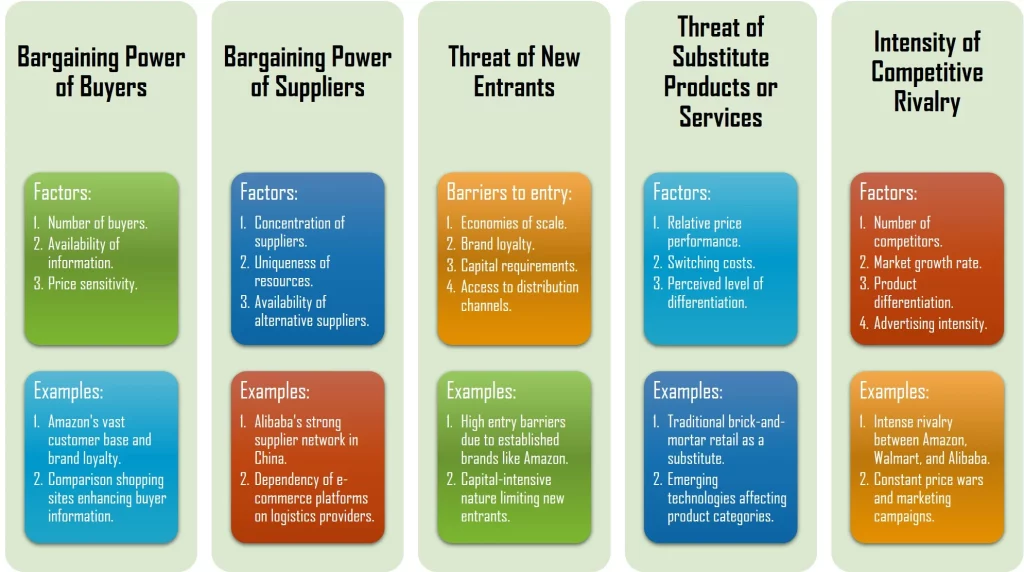
Below is a sample
Porter’s 5 forces analysis essay on the E-commerce retail industry. This example is intended to help students write better Porter’s 5 forces industry analysis essays.
E-commerce Retail Industry Porter’s 5 Forces Essay
Porter’s 5 Forces Essay Outline: E-commerce Retail Industry Analysis
Here is the outline for this sample Porter’s 5 forces essay:
- Introduction
- Brief overview of the e-commerce retail industry.
- Importance of analyzing competitive forces using Porter’s Five Forces.
- Bargaining Power of Buyers
- Overview of buyer power in e-commerce.
- Factors affecting buyer power:
- Number of buyers.
- Availability of information.
- Price sensitivity.
- Examples:
- Amazon’s vast customer base and brand loyalty.
- Comparison shopping sites enhancing buyer information.
- Bargaining Power of Suppliers
- Overview of supplier power in the e-commerce retail industry.
- Factors affecting supplier power:
- Concentration of suppliers.
- Uniqueness of resources.
- Availability of alternative suppliers.
- Examples:
- Alibaba’s strong supplier network in China.
- Dependency of e-commerce platforms on logistics providers.
- Threat of New Entrants
- Overview of the threat of new entrants in e-commerce.
- Barriers to entry:
- Economies of scale.
- Brand loyalty.
- Capital requirements.
- Access to distribution channels.
- Examples:
- High entry barriers due to established brands like Amazon.
- Capital-intensive nature limiting new entrants.
- Threat of Substitute Products or Services
- Overview of the threat of substitutes in e-commerce.
- Factors influencing substitution:
- Relative price performance.
- Switching costs.
- Perceived level of differentiation.
- Examples:
- Traditional brick-and-mortar retail as a substitute.
- Emerging technologies affecting product categories.
- Intensity of Competitive Rivalry
- Overview of competitive rivalry in the e-commerce retail industry.
- Factors influencing rivalry:
- Number of competitors.
- Market growth rate.
- Product differentiation.
- Advertising intensity.
- Examples:
- Intense rivalry between Amazon, Walmart, and Alibaba.
- Constant price wars and marketing campaigns.
- Conclusion
- Summary of key findings from the Porter’s Five Forces analysis.
- Implications for strategic decision-making in the e-commerce retail industry.

